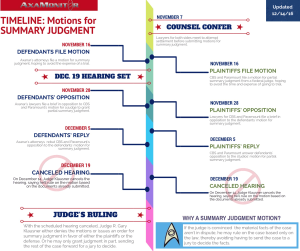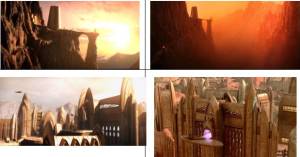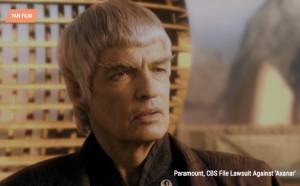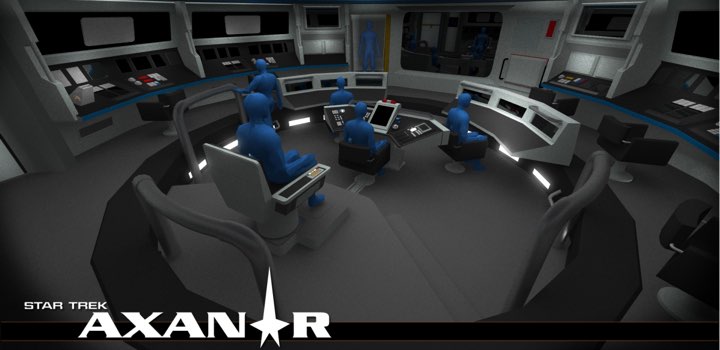
DERIVATIVE OR ORIGINAL? Is Axanar’s design for the bridge of its featured starship substantially similar to official Star Trek? That question goes to the heart of the case. Image/Axanar Productions
Attorneys Attack Pre-Trial Evidence in Axanar Case
Each side files opposition to the other’s motion for summary judgment
Table of Contents
See also: Plaintiffs' Motion and Defendants' Motion and Explainer: Summary Judgment
In motions filed November 28 in U.S. District Court in Los Angeles, each side in the Axanar Copyright Infringement lawsuit sought to convince a judge to deny the other’s motion for summary judgment.
Opposing Motions
These new briefs were the second step in the process by each side to seek a summary judgment from Judge R. Gary Klausner that began November 16.
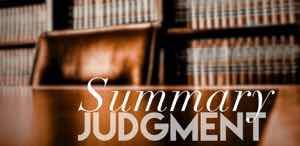
In the opposition documents, each side submitted new documents and evidence to bolster its claims, as well as objections to previously submitted evidence by opposing counsel in the case. The defense, for example, objected to testimony from the deposition of CBS senior vice president John Van Citters.
The plaintiffs, for their part, moved to have Axanar surrogate Jonathan Lane, who covers fan productions for his blog, Fan Film Factor, disqualified as an expert witness, with his testimony consisting of hearsay.
Disputing Facts
These objections were part of a larger effort by each side to call into question the other’s set of undisputed material facts. If either side convinces the judge that what he are deems material facts remain in dispute, the case must go on to its scheduled trial January 31, 2017.
As part of that effort, each side filed what are called evidentiary objections — an attempt to get the judge to disallow certain evidence as irrelevant or inadmissible.
Defendants' Significant Disputed Facts
{!stub:incomplete section requiring author’s attention}}
DRAFT This article is still in draft form. When substantially complete, this notice will be removed.
Plaintiffs' Significant Disputed Facts
{!stub:incomplete section requiring author’s attention}}
Plaintiffs' Opposition
In the new filing, plaintiffs CBS and Paramount Pictures straightforwardly rebutted the defense arguments for summary judgment, addressing the defendants’ three main points:
« Defendants have not merely taken a smattering of unprotectable elements and combined them. Instead, Defendants have faithfully recreated every possible element of the Star Trek universe. » — Plaintiffs’ Opposition to Defendants’ Motion for Summary Judgment
- The copyright infringement claims against Axanar were premature.
- The feature film, Axanar, was not going to be substantially similar to Star Trek.
- The Axanar works qualified as fair use under U.S. copyright law.
In addition, the plaintiffs attempted to refute the defense arguments that:
- Axanar’s works are fan films.
- Axanar was intended as social commentary or satire.
- Defendant Peters and his Axanar Productions profited from making Axanar and intended to compete with official Star Trek works produced by CBS and Paramount.
- Plaintiffs' Rebuttal Arguments
-
- Not Too Soon to Sue
-
In its November 16 motion, the defense asserted that the studios’ lawsuit against Axanar is premature since the feature film exists only as an unfinished screenplay, has yet to be produced and is a “non-commercial film project.”
In their opposition to the defense motion, the studios’ lawyers said they’re suing for all Axanar’s works, including the already completed short film, Prelude to Axanar, the completed “Vulcan Scene” from the Axanar screenplay and the screenplay for feature, Axanar.
The plaintiffs believe all these works were “fixed in a tangible medium of expression,” as required for proving infringement. Despite the defendants’ claims the feature’s script remained unfinished, the studios’ attorneys pointed to the case law cited by Judge Klausner when he rejected Axanar’s motion for dismissal months before:
In a similar case in this Court, the defendants moved for summary judgment, arguing that the materials they created in the production of their film could not be the subject of a copyright claim because they were merely transitory steps en route to a fixed product.1) The Court rejected this argument, finding that the elements created by defendants, including a script and promotional “trailer” satisfied the requirements of the Copyright Act of material cast in some tangible form.2)Klausner had already ruled that Axanar‘s screenplay was a sufficiently fixed tangible medium qualifying for examination as copyright infringement. Further, the plaintiffs stated, the script changes made since the lawsuit were irrelevant because they were the result of the lawsuit.
- Substantially Similar to Star Trek
-
The defendants also claimed that none of Axanar’s works are substantially similar to Star Trek because they used relatively little of the studios’ copyrighted elements in Axanar. But the plaintiffs referred to Judge Klausner’s own rejection of Axanar’s dismissal motion months before in noting that the “defendants need not take the entire plot from any particular episode or film in order to create an infringing, derivative work.” The plaintiffs added:
Defendants have not merely taken a smattering of unprotectable elements and combined them. Instead, Defendants have faithfully recreated every possible element of the Star Trek universe, down to excruciating details. Further, while Defendants assert that they have included additional “original” characters in the Axanar Works, these additional characters are by no means “original” – they are Klingons, Vulcans, and Federation officers, and are, therefore, not “original” to Defendants. Defendants’ Axanar Works are substantially similar to the Star Trek Copyrighted Works precisely because Defendants intentionally and deliberately copied characters, settings, plot points, dialogue, themes, pace, mood, races, species, ships, and weapons from Plaintiffs’ works in order to create an unlicensed, “independent Star Trek film.”3)Further, the plaintiffs argued that determining whether Axanar is substantially similar to the studios’ Star Trek “is a matter of law,” meaning it’s a matter that would be determined by the judge considering summary judgment, and wouldn’t have to be determined by a jury, so long as the other material facts of the case remain undisputed.4)
- Fails Fair Use Test
- Under the fair use provisions of U.S. copyright law, the defense motion asserted, Axanar’s works are protected.
Defendants' Opposition
Meanwhile, the defendants filed their own opposition to the studios’ motion for partial summary judgment, asserting that undisputed material facts in their copyright complaint against producer Alec Peters and his Axanar Productions were sufficient for Klausner to rule on just the law involved, sending the case to trial for a jury to assess damages. Specifically, the plaintiffs want the judge to find these facts undisputed:
- That CBS and Paramount own Star Treks’ copyrights.
- Peters and his company, Axanar Productions Inc., willfully infringed on those copyrights by “creating works that are substantially similar [to] and that copy protected elements of Plaintiffs’ works, including specific characters, settings, themes, mood, tone, plots and dialogue.”
- That the defendants’ argument for producing its independent Star Trek production under copyright law’s provision for fair use fails the four-factor test the law asks the court to weigh.
- Defendants' Rebuttal Arguments
-
- Plaintiffs Fail to Prove Axanar is Substantially Similar to Star Trek
- According to the defense, CBS and Paramount bear the burden of proving Axanar’s works are substantially similar to the studios’ Star Trek, while the defense contended that Axanar and Prelude to Axanar “pull from many sources and inspirations beyond Star Trek,” including Band of Brothers and M*A*S*H … [and] in any event, protected by fair use.“5)
- Trek Characters Not Protected by Copyright
- Several of Axanar‘s characters, like protagonist Garth of Izar and Vulcan Ambassador Soval are too superficially described to be subject to protection as copyrighted elements of Star Trek, according to the defense opposition.6)
- No Harm to Official Star Trek
-
As part of the fair use analysis, courts consider the impact on the plaintiff’s market the most important factor, but the defense alleged the studios presented no evidence at all of harm by Axanar. “For good reason,” the defense stated, “they have not been.”7) Instead, Axanar and other fan productions have only benefitted CBS and Paramount.
At best, the studios’ theoretical, future harm posed by Axanar is “unsubstantiated and self-serving speculation,” that if construed by the judge as evidence would create a sufficient factual dispute on fair use to warrant denial of the plaintiffs’ motion for partial summary judgment, sending the case forward for a jury to determine the facts.
- 'Axanar' is Transformative
- An important part of the defendants’ case is that Axanar is a transformative treatment of Star Trek, qualifying the works for fair use protection against copyright infringement claims.
- Axanar Made No Profits
-
The plaintiffs’ assertion that Axanar is a commercial enterprise is false, according the defense opposition brief, because Peters and his company have made no profits:
Plaintiffs’ attempts to characterize monies collected from donors before Defendants’ Works were created as “profits” from those works is nonsensical, as such funds were used to cover expenses incurred in creating those works.Moreover, the defense stated, CBS and Paramount have no right to criticize how Peters spent $1.5 million raised from Star Trek fans to create Axanar when the studios’ lawsuit has halted the film’s production.
- Factual Dispute over Whether Infringement was Willful
- The defense’s opposition noted that a finding that the infringement allegedly done by Peters was willful would increase the amount of statutory damages that could be claimed by the plaintiffs. But enough factual disputes exist about whether Axanar was truly a fan film to make a summary judgment inappropriate. The defense theorized the studios’ treatment of fan films created a tradition on which Peters relied in believing his production fell within CBS and Paramount’s tolerated use of their Star Trek intellectual property.
Next Steps
The next step in the summary judgment process requires each side to file a reply by December 5 to the opposition briefs submitted November 28. That will be followed by a hearing before Judge Klausner scheduled for December 19. He will rule after that.
In the meantime, the case continued to move toward its January 31, 2017, trial.
Keywords
